The DuPage Forest Preserve District board of commissioners is pledging to support the Illinois Monarch Project, a public and private sector partnership whose goal is to add 150 million milkweed plants to the Illinois landscape by 2038.
“Over the past 2 decades, the population of monarch butterflies has declined by 80% or more,” said Anamari Dorgan, director of community engagement services at the Forest Preserve District. “Illinois lies directly in the migration flyway for the eastern monarch butterfly.”
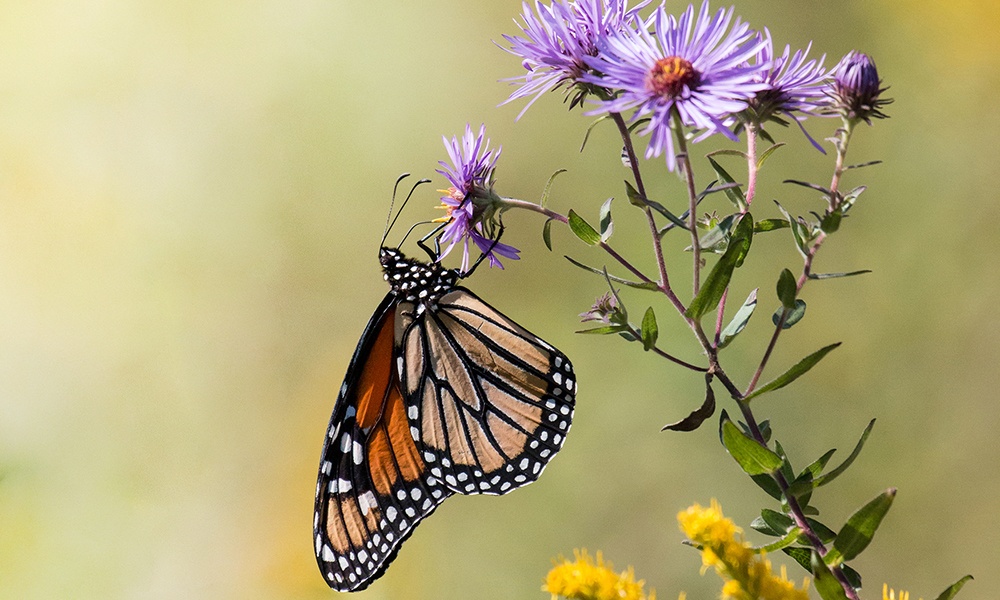
In 2020 the Illinois Monarch Project launched the Illinois Monarch Action Plan to support monarch conservation by creating new pollinator habitats and managing existing ones; providing educational opportunities about habitat conservation; reducing herbicide use and turf mowing of natural areas when monarchs are present; and managing invasive plants that threaten native vegetation, Dorgan said.
"It’s clear that we share the same commitment as the Illinois Monarch Project and the statewide initiative to conserve habitat for monarchs and other pollinators,” Dorgan said.
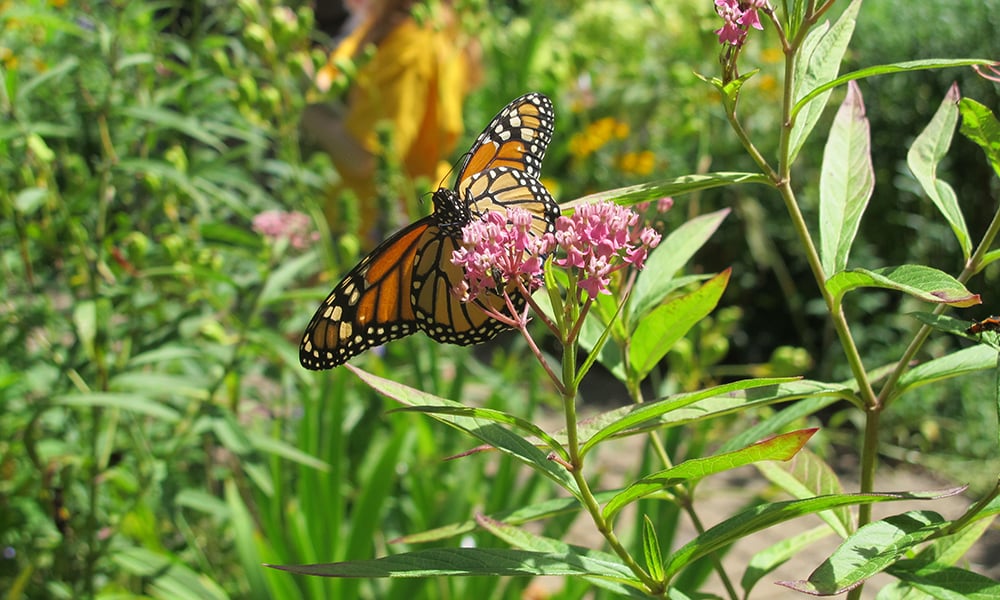
In fact, the DuPage Forest Preserve District has already done much to help monarch butterflies and other pollinators.
District ecologist Andres Ortega said nine species of milkweed have been observed in DuPage forest preserves since 2015. All DuPage forest preserves have at least two species of milkweed, while 55 DuPage forest preserves have at least three species of milkweed, Ortega said.
Waterfall Glen and West Chicago Prairie forest preserves have the highest number, with eight different milkweed species each, Ortega said. Danada and Greene Valley forest preserves have the second highest, followed by Springbrook Prairie, Timber Ridge, Churchill Woods, Willowbrook, Hidden Lake and Lyman Woods with the third highest number of milkweed species, he said.
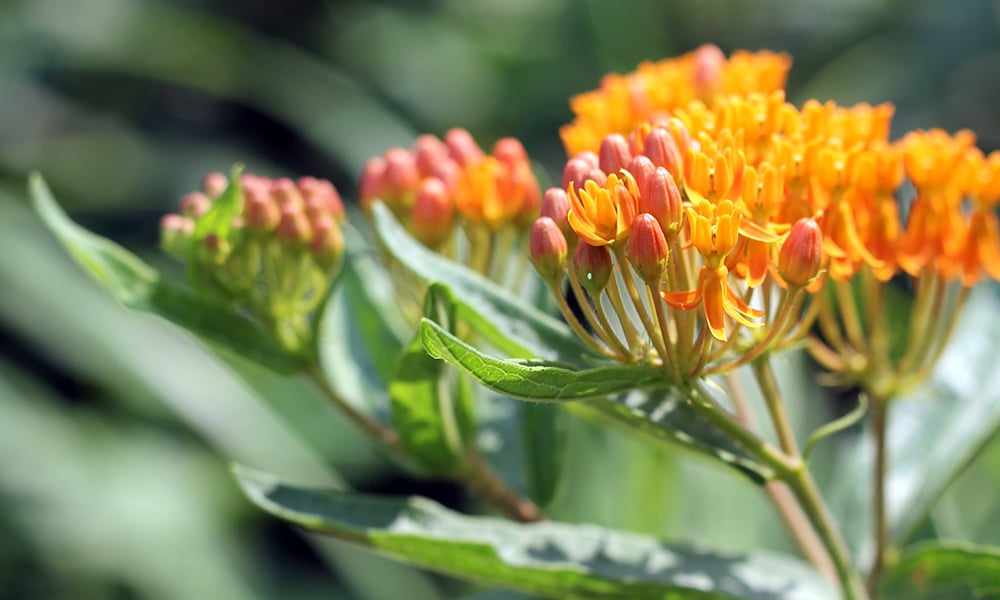
Butterfly weed is another kind of milkweed.
“This indicates that we are doing extremely well in terms of milkweed species richness throughout the county,” Ortega said. “In my opinion, we are already accomplishing what the pledge is asking: to increase milkweed abundance and diversity throughout Illinois. I believe we’ve been doing so for many years and will continue to do so into the future.”
The District also supports monarch butterflies and other pollinators through resource management, volunteers and volunteer monitoring programs; and community outreach, education and relations, Ortega said.
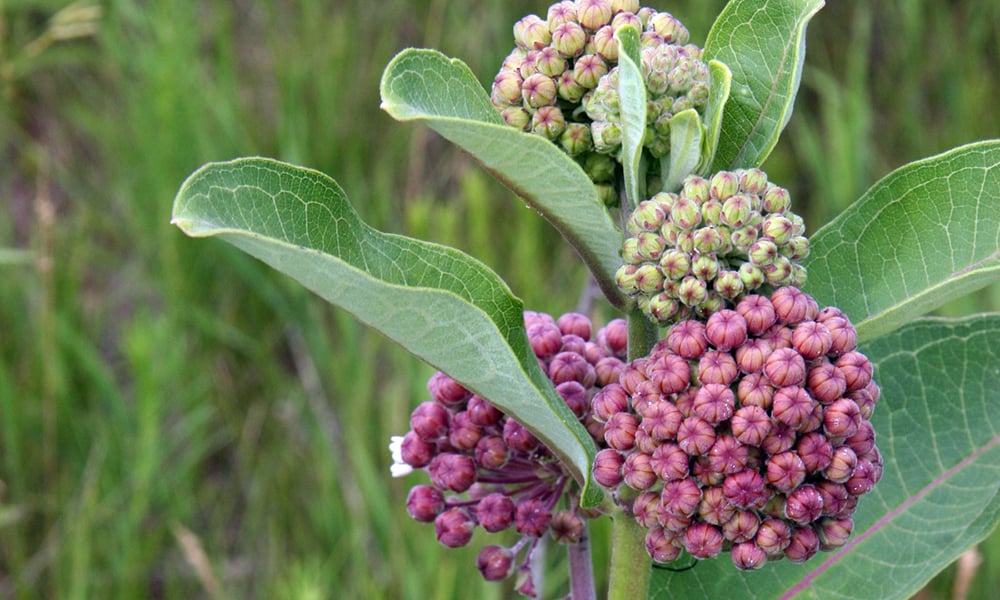
Monarch butterflies will only lay eggs on milkweed such as this common milkweed.
Common milkweed Resource management entails seed collection, purchase and distribution; invasive species removal and following an integrated pest management approach that manages in the most minimally invasive and ecologically benign way possible, he said.
For example, seed collection, purchase and distribution has made it possible for all DuPage forest preserves have at least one bee “super food,” or plant like wild bergamot that provides an above-average food source that’s especially beneficial to bees and other pollinators.
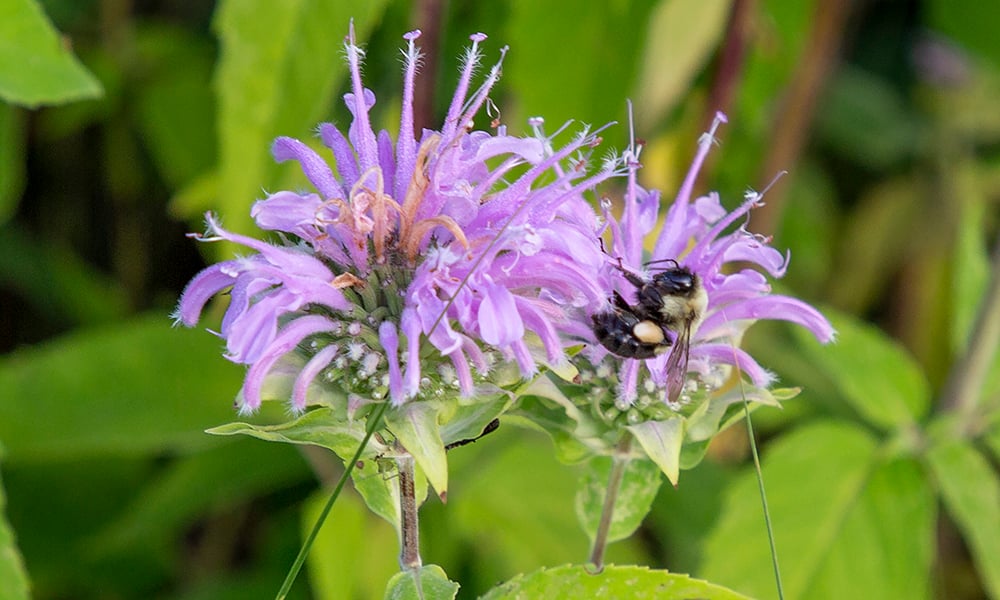
Wild bergamot (above) is considered a "super food" because it provides an above-average food source that's especially beneficial to bees and other pollinators.
When conducting prescription burns, District crews leave adjacent areas unburned so pollinators can easily recolonize newly burned areas. Crews also mow at a higher deck height and slower speed to avoid impacting ground-nesting bees. And herbicide is applied in a very targeted, selective way after review to ensure it’s the more ecologically benign product available, Ortega said.
Volunteers help in many ways, including volunteer workdays, as stewards caring for certain preserves, and as butterfly and rare pollinator monitors.
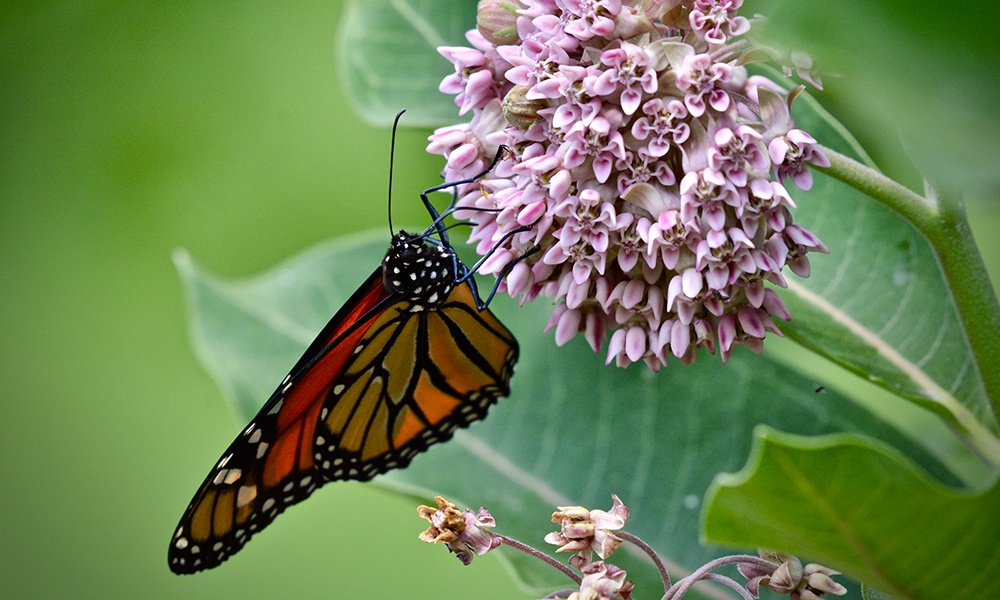
Through community outreach, the District partners with others like the DuPage Monarch Project; distributes pollinator seed packets to the public; and interacts with the public online and in person to inform them about what the District is doing and what they can do to help pollinators.
“It empowers people to help us and to help in their own way,” Ortega said.
Free pollinator seed packets are available at Forest Preserve District headquarters at 3S580 Naperville Road in Wheaton.
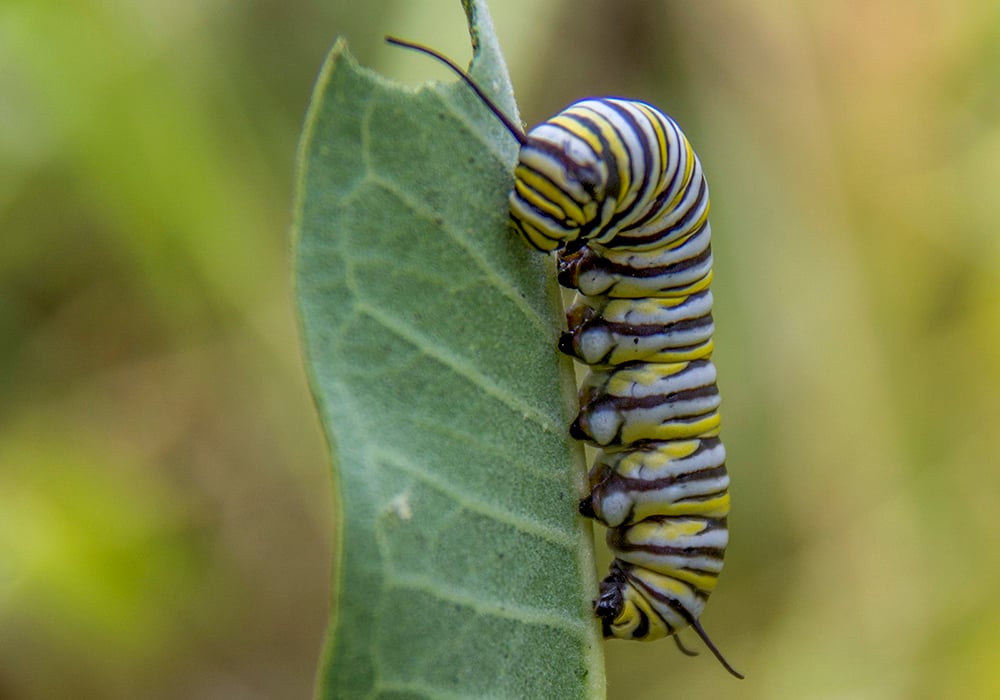
A monarch caterpillar eats only milkweed.